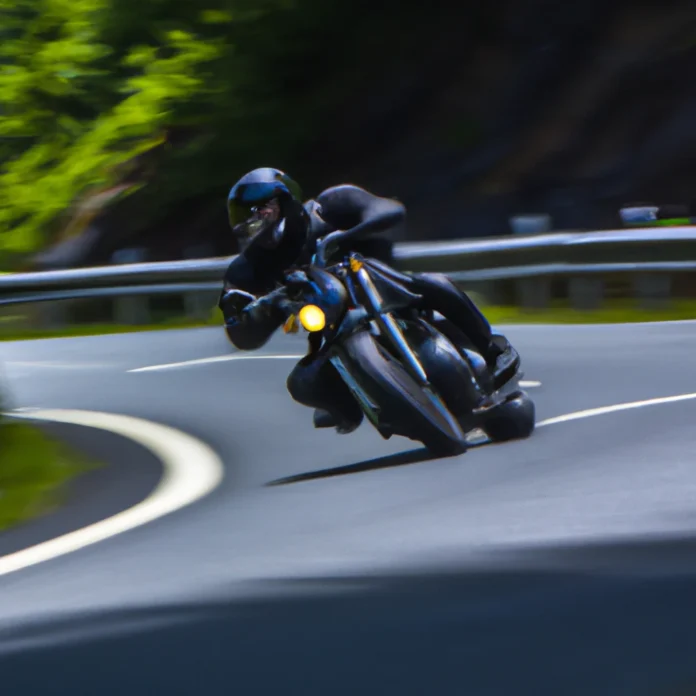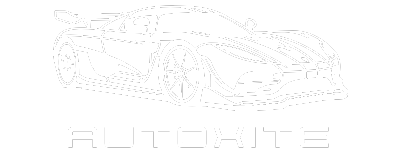Introduction: The Allure of Speed on Two Wheels
The thunderous growl of a high-performance engine, the blur of the world whipping past, and the tactile connection between rider and machine — these are the visceral thrills that make motorcycle speed so alluring. For many, the quest to ride the fastest motorcycle in the world is not just about numbers, but about the pure, unfiltered sensation of velocity. The pursuit of speed on two wheels has shaped technology, inspired legends, and sparked debates about whether these machines are truly practical or simply overhyped.
What Defines the Fastest Motorcycle in the World?
Defining the fastest motorcycle is more complex than it appears. Manufacturers tout top speeds, acceleration times, and even specialized record-breaking runs. But what criteria actually matter when bestowing the crown of “world’s fastest”?
How Is Motorcycle Speed Measured?
Speed can be measured in several ways, but the most common metric is top speed — the absolute maximum velocity a motorcycle can achieve under optimal conditions. Official records are typically set using certified timing equipment on closed courses, often with two runs in opposite directions to account for wind and elevation changes.
Acceleration figures, such as 0-60 mph or quarter-mile times, offer another perspective on performance. These tests emphasize how quickly a bike can reach high speeds, reflecting both engine power and traction.
Top Speed vs. Acceleration: Which Matters More?
While top speed captures headlines, many riders argue that acceleration creates the most exhilarating experiences on real roads. The explosive surge of power when twisting the throttle often provides more usable thrills than chasing a theoretical maximum speed that few will ever reach.
Ultimately, both metrics have their place. For record-setting and bragging rights, top speed reigns supreme. For everyday excitement, rapid acceleration is frequently more relevant.
The History of Speed Records in Motorcycling
The story of motorcycle speed records is a saga of innovation, daring, and relentless ambition. From the earliest days of motorcycling, riders and engineers have pushed the boundaries of what is possible on two wheels.
Early Attempts at Breaking Speed Barriers
In the early 20th century, pioneers like Glenn Curtiss and Bert Le Vack risked life and limb to shatter speed barriers. Their machines, often little more than reinforced bicycles with oversized engines, set the stage for a century of record-breaking pursuits.
Landmark Moments in Motorcycle Speed Evolution
The 1930s saw streamlined designs and supercharged engines come to the fore, with the likes of BMW and Brough Superior trading records on salt flats and airstrips. After World War II, advances in aerodynamics and materials pushed speeds even higher, with the Bonneville Salt Flats becoming synonymous with speed trials.
Notable Record Holders Through the Decades
From Rollie Free’s legendary “bathing suit” run in 1948 to the turbocharged rockets of the 1980s and 1990s, each era produced its own icons. Names like Suzuki Hayabusa, Kawasaki Ninja, and MV Agusta have become shorthand for speed. For a deeper dive into the legacy and recent contenders, see our feature on why the fastest motorcycles continue to make headlines.
Current Fastest Motorcycles: The Ultimate Contenders
Today, the race for the title of fastest production motorcycle is as fierce as ever. Manufacturers push the limits of engineering and legality, all in pursuit of that elusive record-breaking number.
Which Motorcycle Holds the Official Speed Record?
The current official speed record for a production motorcycle is held by the Dodge Tomahawk, a machine that blurs the line between motorcycle and concept car. While some argue about its classification, its numbers are staggering. More traditional contenders include the Kawasaki Ninja H2R and the Suzuki Hayabusa, each with their own claims to fame based on different testing standards.
Top 10 Fastest Production Motorcycles (2024 Update)
The 2024 leaderboard features a mix of established legends and innovative newcomers. Here are the top contenders:
- Kawasaki Ninja H2R
- Dodge Tomahawk
- Lightning LS-218 (electric)
- Suzuki Hayabusa
- MV Agusta F4 RC
- BMW S1000RR
- Aprilia RSV4 1100 Factory
- Yamaha YZF-R1M
- Ducati Panigale V4 R
- Honda CBR1000RR-R Fireblade SP
Each of these machines offers a unique blend of power, aerodynamics, and technology.
Comparison Table: Fastest Motorcycles at a Glance
To help visualize the differences, here’s a quick overview:
| Model | Top Speed (mph) | Engine Type | Year |
|---|---|---|---|
| Kawasaki Ninja H2R | 249 | Supercharged Inline-4 | 2024 |
| Dodge Tomahawk | 350 (claimed) | V10 | Concept |
| Lightning LS-218 | 218 | Electric | 2024 |
| Suzuki Hayabusa | 194 | Inline-4 | 2024 |
Spotlight: The Bugatti Chiron of Bikes – Dodge Tomahawk
The Dodge Tomahawk stands as a symbol of engineering excess, often compared to the Bugatti Chiron for its sheer audacity. Boasting a V10 engine sourced from the Dodge Viper, its claimed top speed has fueled debates and disbelief among enthusiasts.
Is the Dodge Tomahawk Street Legal?
Despite its jaw-dropping specifications, the Dodge Tomahawk is not street legal in most jurisdictions. Its unusual four-wheel design and lack of compliance with safety and emissions standards keep it confined to private collections and museum floors, rather than public roads.
Engineering Marvels Behind the Fastest Bikes
Achieving record-breaking speed is not just about raw power. The fastest motorcycles rely on advanced engineering across multiple disciplines, from aerodynamics to electronics.
Aerodynamics: Slicing Through the Air
At high speeds, air resistance becomes the primary adversary. Designers sculpt fairings and bodywork to minimize drag, often using wind tunnel testing to perfect every contour. The result is a machine that feels almost glued to the pavement, with the wind whispering over a rider’s helmet and the roar of the engine echoing beneath.
Engine Technology: Powering Extreme Performance
Modern superbikes use turbocharging, supercharging, and electronic fuel injection to extract maximum horsepower. High-revving engines, lightweight internals, and precision tuning allow these bikes to deliver instant acceleration and sustained top speeds. The relentless pursuit of power is a common thread, as discussed in our article on the revolutionary impact of the fastest bikes.
Materials and Lightweight Construction
Weight savings are achieved through the use of carbon fiber, titanium, and magnesium. Every gram counts when seeking to maximize speed, leading to frames and components that are both featherlight and exceptionally strong.
Electronics and Rider Aids for High-Speed Stability
At the cutting edge, electronics play a vital role. Traction control, anti-wheelie systems, and semi-active suspension help riders manage the immense power and stay in control, even as the landscape blurs by at triple-digit speeds.
Street-Legal vs. Track-Only: What’s the Difference?
The distinction between street-legal motorcycles and track-only machines is crucial for enthusiasts and prospective buyers alike. While both can achieve breathtaking velocities, their intended use and legal status differ significantly.
What Makes a Motorcycle Street-Legal?
To be registered for public roads, a motorcycle must meet strict regulations regarding lighting, noise, emissions, and safety features. Mirrors, turn signals, and license plate mounts are mandatory, as are compliance with regional environmental standards.
Track-Only Monsters: Pushing Beyond Legal Limits
Track-only motorcycles dispense with many of these requirements, allowing manufacturers to focus solely on performance. These machines are lighter, louder, and often more powerful, but their use is restricted to closed circuits where speed has fewer boundaries.
Electric Motorcycles: Are They Catching Up in Speed?
Electric motorcycles have rapidly advanced, challenging the dominance of gasoline-powered superbikes in both acceleration and top speed. Thanks to instant torque and innovative battery technology, some electric models now rival their combustion counterparts.
Top Fastest Electric Motorcycles Today
The Lightning LS-218 leads the pack, with a verified top speed of 218 mph. Other notable contenders include the Energica Ego+ and the Damon Hypersport, which blend cutting-edge technology with impressive real-world performance.
How Do Electric Bikes Compare to Gasoline Counterparts?
Electric bikes offer blistering acceleration from a standstill and require less maintenance due to fewer moving parts. However, range anxiety and charging infrastructure remain obstacles for those who crave cross-country speed runs. As battery technology improves, the gap between electric and gasoline bikes continues to narrow. For additional insights, our article on the real-world value of the world’s fastest motorcycles offers perspective.
Speed vs. Usability: Can You Really Use These Bikes Daily?
While the idea of daily commuting on a 200-mph machine is tempting, reality often proves less glamorous. The unique demands of superfast motorcycles can limit their practicality for everyday use.
Are High-Speed Motorcycles Practical for Everyday Riding?
High-performance bikes typically feature aggressive riding positions, stiff suspension, and minimal storage. City traffic and potholes quickly dampen their appeal, and the temptation to unleash their power can prove both exhausting and risky in urban environments.
Comfort and Ergonomics at Extreme Speeds
At speed, these motorcycles feel stable and planted, but at slower paces, the hunched posture can lead to fatigue. Wind protection is optimized for high-velocity travel, often leaving riders exposed during routine commutes.
Fuel Efficiency and Maintenance Considerations
Superbikes prioritize performance over efficiency, consuming more fuel and requiring frequent, specialized maintenance. Tire and brake wear accelerate dramatically when riding at the limits, leading to increased ownership costs.
Safety Concerns: Is Chasing Speed Worth the Risk?
The pursuit of ultimate speed carries inherent dangers. High-velocity riding demands heightened skill, awareness, and respect for the machine’s capabilities.
What Are the Dangers of Riding at Maximum Velocity?
At extreme speeds, reaction times shrink and small mistakes can have catastrophic consequences. Road debris, unpredictable drivers, and changing weather conditions amplify the risks. The margin for error narrows dramatically as the speedometer climbs.
Essential Safety Gear for High-Speed Riding
Riders should invest in top-tier helmets, armored suits, gloves, and boots. Specialized gear designed for racing can provide crucial protection, reducing the risk of serious injury in the event of a crash.
How Do Manufacturers Address Rider Safety?
Manufacturers integrate advanced safety systems, including cornering ABS, traction control, and airbag-equipped apparel. These technologies are designed to support riders when pushing the envelope, but they cannot eliminate risk entirely.
As experts often say:
“Speed thrills, but it also demands responsibility. True mastery lies not in how fast you go, but in knowing when to hold back.”
Legal Limits: How Fast Can You Go on Public Roads?
Regardless of a motorcycle’s capabilities, public roads impose strict speed limits that riders must respect. Understanding these laws is essential for both safety and legal compliance.
Speed Limits Around the World
Most countries set maximum speed limits between 55 and 80 mph (90–130 km/h) on highways, with lower limits in urban areas. Only a few stretches, such as certain sections of Germany’s Autobahn, allow for unrestricted speed, though even there, safety guidelines apply.
Penalties and Consequences for Excessive Speeding
Exceeding posted limits can result in hefty fines, license suspension, and even jail time in severe cases. Insurance premiums may rise, and repeat offenses can lead to long-term consequences.
For those who crave speed without legal risk, organized events or car and motorcycle tours offer a safer alternative to public road racing.
Are Fast Motorcycles Overhyped?
The marketing surrounding the fastest motorcycles often paints them as the ultimate expression of freedom and power. But how much of this hype translates to real-world satisfaction?
Do Most Riders Ever Use the Full Potential?
In practice, few riders ever approach the top speeds advertised by manufacturers. Most time is spent well below the limit, with brief bursts of acceleration providing the bulk of the excitement.
Marketing Hype vs. Real-World Performance
Manufacturers leverage impressive statistics to sell dreams, but real-world conditions — traffic, road quality, and legal constraints — often limit the experience. Savvy enthusiasts recognize that balance, handling, and rideability are just as important as raw speed. Our review of whether the fastest motorcycle truly lives up to the hype explores this conversation in detail.
What Do Motorcycle Enthusiasts Really Want?
For many, the appeal lies in the engineering, design, and community that surrounds these machines. The fastest motorcycles are aspirational objects — symbols of what is technically possible, even if their full potential is rarely unleashed.
The Culture of Speed: Why Are We Obsessed?
From the earliest days of motorcycling, speed has been woven into the fabric of rider culture. The psychological thrill, the sense of mastery, and the camaraderie among speed enthusiasts all contribute to this enduring obsession.
Psychological Thrill of High-Speed Riding
There is an undeniable rush in feeling the world rush past, the wind tugging at your leathers and the engine’s roar vibrating through your bones. For some, this sensation is as close to flying as one can get on land.
Speed in Pop Culture and Media
Films, music, and literature have long romanticized motorcycle speed, from “The World’s Fastest Indian” to high-octane chase scenes in blockbuster movies. These portrayals fuel the mystique and desirability of high-performance bikes.
Motorcycle Clubs and the Pursuit of Speed
Clubs and riding groups often form around shared passion for performance, organizing track days, group rides, and speed-focused events. These communities foster both competition and mutual respect among their members.
Motorsport: Where Speed Finds Its True Home
The racetrack is where the fastest motorcycles are truly at home. Here, riders and machines are pushed to their absolute limits in a controlled environment designed for safety and spectacle.
MotoGP vs. Land Speed Racing: Which Is Faster?
MotoGP showcases the pinnacle of road racing, with bikes reaching speeds over 220 mph on technical circuits. Land speed racing, by contrast, is a pure test of straight-line velocity, with specialized machines built to break records on salt flats and airstrips.
Iconic Races and Record-Breaking Runs
Events like the Isle of Man TT and Bonneville Speed Week have become legendary for their danger and drama. These races capture the imagination of fans and inspire future generations of speed chasers.
Famous Riders Who Chased Speed Records
Riders such as Burt Munro, Guy Martin, and Valentino Rossi have etched their names into the annals of motorcycle history through daring exploits and relentless pursuit of new records.
Innovation Driven by the Need for Speed
The relentless competition to build the fastest motorcycle has driven countless innovations, many of which trickle down to benefit everyday riders.
How Have Fast Bikes Influenced Everyday Motorcycles?
Advances in engine technology, lightweight construction, and electronics do not remain exclusive to flagship models. Over time, these breakthroughs make their way into more accessible bikes, improving safety, efficiency, and performance for all.
Trickle-Down Technologies: From Track to Street
Features like ride-by-wire throttles, quick-shifters, and launch control originated in racing before becoming standard on street bikes. The pursuit of speed acts as a catalyst for progress throughout the industry.
Environmental Impact: Is Speed Sustainable?
High-speed riding has environmental consequences, particularly in terms of fuel consumption and emissions. As the world shifts toward sustainability, the future of fast motorcycles faces new challenges and opportunities.
Fuel Consumption and Emissions at High Speeds
Riding at maximum velocity dramatically increases fuel consumption and carbon emissions. Manufacturers are under increasing pressure to balance performance with environmental responsibility.
Electric Alternatives and the Future of Fast Bikes
Electric motorcycles offer a promising path forward, delivering impressive speed with lower emissions. As battery technology and charging infrastructure improve, these machines may redefine what it means to be the fastest on two wheels.
Buying Guide: Should You Purchase a Superfast Motorcycle?
For those considering ownership, the decision to buy a superfast motorcycle involves more than a love of speed. Practical, financial, and lifestyle factors all come into play.
Factors to Consider Before Buying
Prospective buyers should assess their riding experience, intended use, and willingness to accept the compromises of high-performance machines. Insurance costs, maintenance, and legal restrictions deserve careful thought.
Insurance and Ownership Costs
Superbikes command higher insurance premiums due to their risk profile. Maintenance is more frequent and expensive, with specialized parts and labor adding to the total cost of ownership.
Resale Value and Depreciation
While some limited-edition models hold their value, most superbikes depreciate rapidly, especially if heavily used or modified. Buyers should factor this into their long-term financial planning.
Fastest Motorcycle FAQs
We address some of the most common questions about the fastest motorcycles.
Can Anyone Ride the Fastest Motorcycles?
While technically possible, riding a high-performance motorcycle safely requires advanced skills and experience. Many manufacturers recommend training courses or licensing endorsements before owners take delivery.
How Much Do the Fastest Bikes Cost?
Prices vary widely, from around $20,000 for premium production models to several hundred thousand dollars for bespoke or limited-edition machines. Maintenance and insurance add to the total investment.
What Maintenance Is Required for High-Performance Bikes?
Regular servicing is critical, including oil changes, tire replacements, and brake checks. High-stress components may require more frequent inspection and replacement to maintain peak performance and safety.
Conclusion: Are Speed Thrills Worth the Hype?
The allure of riding the fastest motorcycle in the world is undeniable. For some, the thrill is worth every compromise; for others, the hype may outpace the practical joys. Ultimately, the decision rests on personal priorities, riding style, and the pursuit of satisfaction — whether that comes from outright speed or the journey itself.
Final Thoughts: The Future of Motorcycle Speed
As technology evolves and societal values shift, the definition of “fastest” will continue to change. Whether fueled by gasoline or electricity, the quest for speed will inspire new innovations and unforgettable experiences. For those who crave the thrill, Autoxite remains a trusted resource. Learn more at Autoxite and stay ahead of the curve in the ever-advancing world of high-performance motorcycles.


